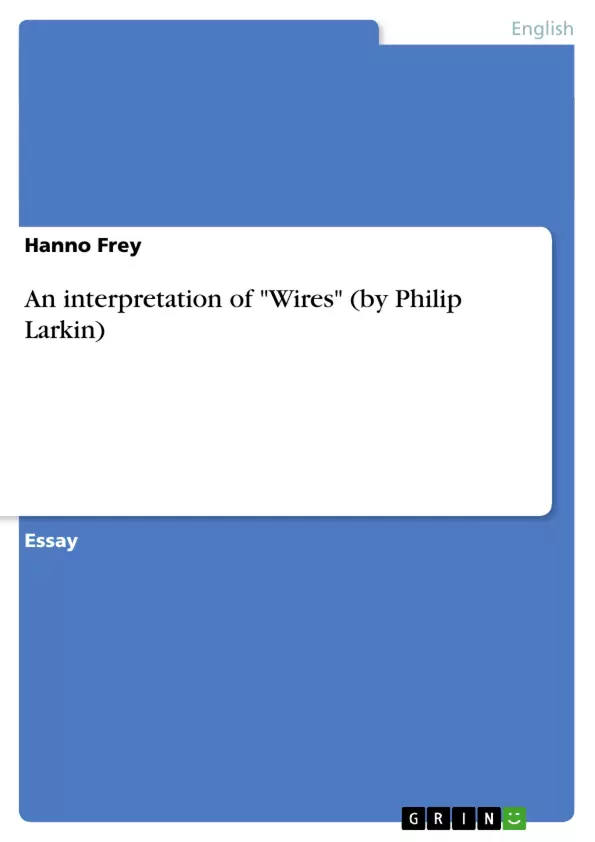For the purpose of interpreting literature a lot of different approaches have been developed. It is up to the reader to decide which one of these methods he wants to apply and whether he wants to relate the author’s biography to the text, to consider its intertextuality or to try to interpret the text on the basis of its words alone. All of these methods focus on different aspects of a text and thus enable the reader not only to gain but also to discuss and change his point of view. It is impossible to say in general which approach is more adequate for textseven though this question could be discussed for single texts in great detail. In this essay I am going to interpret a poem by Philip Larkin mainly with respect to the one characteristic: the style and its paralinguistic aspects. In doing so I am aware of the fact that my interpretation will not be as complete as it potentially may be possible (as I will not be able to cover every feature of the poem). Nevertheless I have chosen this approach because it enables me to spent more attention to this one characteristic. A brief examination of the language used in this poem will also be included.
The question why I have decided to deal especially with the paralanguage of the poem may need some justification as it is a common belief that “Writing, of its nature, makes less use of paralanguage than speech. The physical substance of some written texts exists only to realise linguistic form” (Cook 1992, p. 71). Without any doubts this is true for most texts but still there are exceptions where the linguistic form and the content of the text do relate to each other in a motivated way. Examples of that kind are that rare that they are “both striking and well known” (Cook, 1992, p. 75) and not always is the relation as obvious as in Lewis Carrol´s “The Mouse’s Tale” (Cook, 1992 p. 76) but “hidden” within the inner structure of the text - as in the following example. I am going to prove this statement examining three different aspects of the style the poem is written in.
Table of Contents
- Introduction
- The Poem
- Interpretation
- The plot
- Style
- The rhyme schema
- The enjambement
- The chiasmus
- The Language
- Conclusion
- References
Objectives and Key Themes
This essay aims to interpret Philip Larkin's poem "Wires" by focusing on its style and paralinguistic aspects. The essay explores how the poem's linguistic form relates to its content, arguing that the poem's style visualizes the experiences of the young steers through specific techniques.
- The relationship between linguistic form and content in poetry
- Paralinguistic aspects of poetry, specifically in "Wires"
- The use of rhyme schema, enjambement, and chiasmus to visualize the poem's theme
- The portrayal of confinement and frustration through the imagery of electric fences
- The contrast between the older cattle and the younger steers
Chapter Summaries
The introduction discusses different approaches to interpreting literature, highlighting the importance of examining stylistic features. The essay then focuses on Larkin's "Wires", analyzing the poem's plot and style. The plot section describes the situation of cattle confined by electric fences, with the younger steers constantly trying to escape.
The style section delves into the poem's use of rhyme schema, enjambement, and chiasmus, demonstrating how these features contribute to the visual representation of the steers' frustration and their repeated attempts to break free.
Keywords
Key terms and concepts explored in this essay include: paralinguistic aspects of poetry, stylistic analysis, rhyme schema, enjambement, chiasmus, confinement, frustration, and the relationship between linguistic form and content.
- Citation du texte
- Hanno Frey (Auteur), 2001, An interpretation of "Wires" (by Philip Larkin), Munich, GRIN Verlag, https://www.grin.com/document/16524



